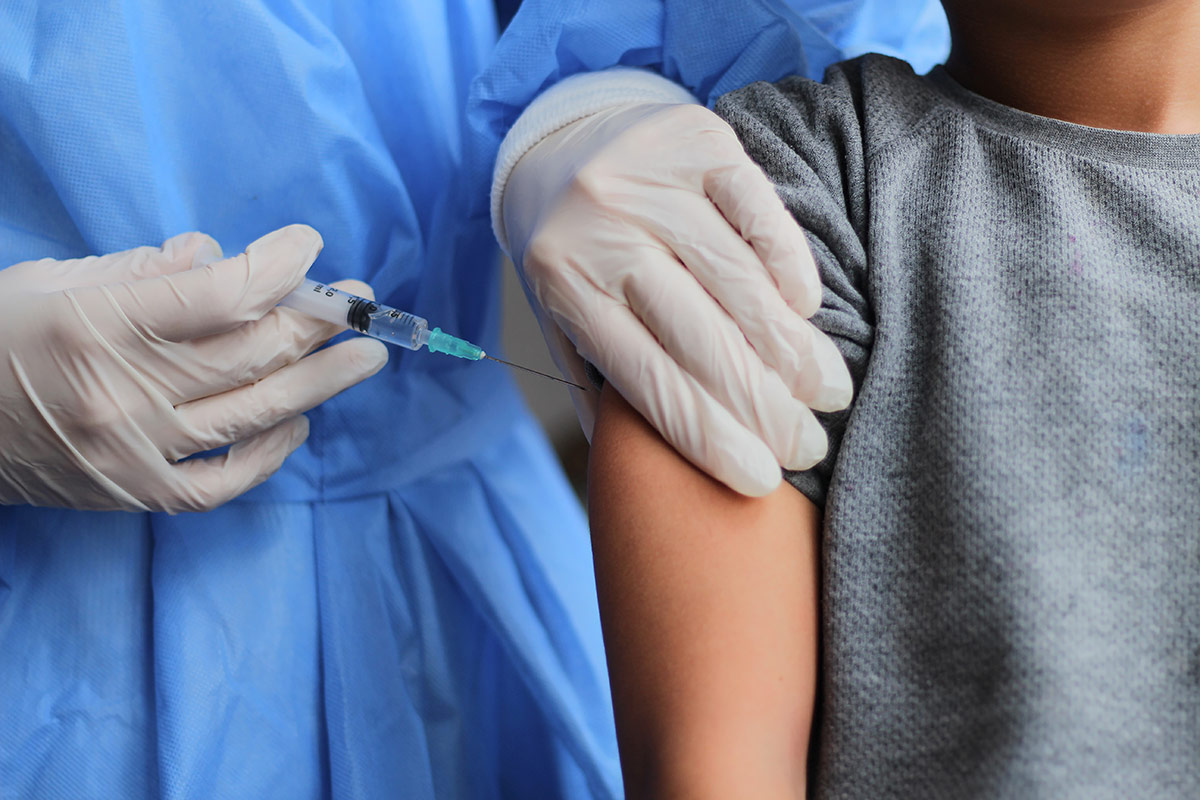Nigeria is currently grappling with one of its most severe diphtheria outbreaks in recent history, with health authorities reporting alarming statistics that underscore the urgent need for increased public awareness and preventive measures. Since December 2022, the country has been fighting a relentless battle against this vaccine-preventable disease that has claimed hundreds of lives and infected thousands across multiple states.
The Current Crisis
The magnitude of Nigeria’s diphtheria outbreak is staggering. As of the latest reports from health authorities, the country has recorded over 13,000 suspected cases and more than 8,500 confirmed cases across 116 Local Government Areas in 19 states and the Federal Capital Territory. The outbreak has resulted in at least 493 deaths, representing a significant public health emergency that demands immediate attention.
Kano State has emerged as the epicenter of the outbreak, accounting for approximately 85% of confirmed cases. The disease has also spread to other states including Lagos, Yobe, Katsina, Cross River, Kaduna, Osun, and several others, demonstrating the widespread nature of this health crisis.
“Since December 2022, Nigeria has been dealing with a severe outbreak of Diphtheria, resulting in 471 deaths, over 7,400 confirmed cases and 12,000 suspected cases,” according to the International Federation of Red Cross and Red Crescent Societies. The outbreak has intensified significantly since July 2023, with over 1,000 new cases being identified every week during peak periods.
Understanding Diphtheria: The Silent Killer
Diphtheria is a highly contagious bacterial infection caused by Corynebacterium diphtheriae. This vaccine-preventable disease primarily affects the respiratory system but can also impact the skin and other organs. The bacteria produces a powerful toxin that can cause severe complications and death if left untreated.
The disease spreads through respiratory droplets when an infected person coughs, sneezes, or talks. It can also be transmitted through direct contact with infected skin lesions or contaminated objects. What makes diphtheria particularly dangerous is its ability to form a thick, grayish membrane in the throat and nose, which can obstruct breathing and lead to suffocation.
Clinical Manifestations and Warning Signs
Healthcare professionals and the general public must be aware of diphtheria’s clinical presentation to ensure early detection and treatment. The disease typically begins with symptoms that may be mistaken for a common cold or sore throat, making early diagnosis challenging.
Early symptoms of diphtheria include:
– Sore throat and difficulty swallowing
– Low-grade fever and chills
– Swollen lymph nodes in the neck
– General weakness and fatigue
– Nasal discharge that may be bloody
As the disease progresses, more severe symptoms develop:
– Formation of a thick, gray membrane covering the throat and tonsils
– Severe difficulty breathing due to airway obstruction
– High fever
– Rapid heartbeat
– Bluish coloration of the skin due to lack of oxygen
In severe cases, the diphtheria toxin can affect the heart, nervous system, and kidneys, leading to complications such as heart failure, paralysis, and kidney damage. Without prompt medical intervention, the case fatality rate can reach alarming levels, as evidenced by the current outbreak statistics.
Vulnerable Populations at Greatest Risk
The current outbreak has revealed concerning patterns about who is most vulnerable to diphtheria infection. Children under the age of 10 represent the majority of cases, with studies showing that 64.3% of affected individuals fall within this age group. Particularly alarming is the finding that many of the affected children had no prior vaccination against diphtheria.
Several factors contribute to increased vulnerability:
– Inadequate vaccination coverage, particularly in rural and marginalized communities
– Poor living conditions and overcrowding
– Limited access to healthcare services
– Malnutrition and compromised immune systems
– Religious and cultural beliefs that may discourage vaccination
– Lack of awareness about the importance of routine immunization
Adults who are unvaccinated or whose immunity has waned over time are also at risk, particularly those in close contact with infected individuals or those living in outbreak areas.
The Vaccination Crisis Behind the Outbreak
Nigeria’s diphtheria outbreak is fundamentally rooted in suboptimal vaccination coverage across the country. The pentavalent vaccine, which protects against diphtheria along with tetanus, pertussis, hepatitis B, and Haemophilus influenzae type b, has not reached adequate coverage levels in many communities.
According to the 2021 Nigeria Multiple Indicator Cluster Survey and National Immunization Coverage Survey, significant gaps exist in routine immunization coverage. These gaps are particularly pronounced in northern states, where cultural and religious resistance to vaccination, combined with inadequate healthcare infrastructure, has created pockets of susceptibility.
The COVID-19 pandemic further exacerbated the situation by disrupting routine immunization services. Many children missed their scheduled vaccinations during lockdowns and service disruptions, creating a larger pool of susceptible individuals. This “immunity debt” has now manifested as a severe outbreak affecting thousands of Nigerian children and adults.
Geographic Distribution and Spread Patterns
The outbreak’s geographic distribution reveals important insights into disease transmission patterns and risk factors. While Kano State remains the primary hotspot, the disease has demonstrated its ability to cross state boundaries and establish secondary transmission chains in other regions.
The affected states include:
– Kano State (epicenter with majority of cases)
– Lagos State (significant urban transmission)
– Yobe State (northeastern Nigeria)
– Katsina State (northwestern Nigeria)
– Cross River State (southern Nigeria)
– Kaduna State (north-central Nigeria)
– Osun State (southwestern Nigeria)
– Federal Capital Territory (Abuja)
This widespread distribution suggests multiple introduction points and sustained community transmission, highlighting the need for coordinated national response efforts rather than localized interventions alone.
Government and International Response
The Nigerian government, through the Nigeria Centre for Disease Control and Prevention (NCDC), has mounted a comprehensive response to combat the outbreak. Working in collaboration with the World Health Organization (WHO) and other international partners, authorities have implemented several key interventions.
Response measures include:
– Procurement of 10,050 Diphtheria Antitoxin (DAT) vials for case management
– Establishment of dedicated isolation wards in affected areas
– Active case finding and contact tracing activities
– Emergency vaccination campaigns in high-risk areas
– Laboratory support for case confirmation
– Training of healthcare workers on case management protocols
The WHO has provided technical support and emergency supplies, while the International Federation of Red Cross and Red Crescent Societies has mobilized resources for community engagement and health education activities.
Challenges in Outbreak Control
Despite ongoing response efforts, several challenges continue to hamper effective outbreak control. Limited healthcare infrastructure in remote areas makes it difficult to reach all affected communities with essential services. The shortage of Diphtheria Antitoxin, the specific treatment for diphtheria, has complicated case management efforts.
Community resistance to vaccination and healthcare interventions remains a significant obstacle in some areas. Misinformation and vaccine hesitancy, often fueled by religious or cultural beliefs, continue to undermine prevention efforts. Additionally, the weak surveillance system has likely led to underreporting of cases, masking the true extent of the outbreak.
Economic constraints faced by many families also contribute to delayed healthcare seeking, allowing the disease to progress to severe stages before medical intervention is sought.
Treatment and Case Management
Early recognition and prompt treatment are crucial for reducing diphtheria mortality. The mainstay of treatment is Diphtheria Antitoxin (DAT), which neutralizes the circulating toxin before it can cause irreversible damage to organs. However, DAT must be administered as early as possible in the course of illness for maximum effectiveness.
Treatment protocol includes:
– Immediate administration of Diphtheria Antitoxin
– Appropriate antibiotic therapy (penicillin or erythromycin)
– Supportive care including airway management
– Isolation of patients to prevent transmission
– Monitoring for complications affecting the heart and nervous system
Healthcare facilities treating diphtheria patients require specialized equipment and trained personnel to manage potential complications, including emergency airway interventions when breathing becomes compromised.
Prevention Strategies and Public Health Measures
Prevention remains the most effective strategy against diphtheria. The primary prevention method is vaccination with the diphtheria-containing vaccine, typically given as part of the pentavalent vaccine in childhood and boosted with tetanus-diphtheria vaccines in adulthood.
Key prevention strategies include:
– Routine childhood immunization according to the national schedule
– Catch-up vaccination campaigns for unimmunized children
– Adult booster doses every 10 years
– Improved sanitation and hygiene practices
– Prompt isolation and treatment of suspected cases
– Contact tracing and prophylaxis for close contacts
Community education plays a vital role in prevention efforts. Public awareness campaigns must address misconceptions about vaccination while emphasizing the serious consequences of diphtheria infection.
The Role of Healthcare Workers and Community Leaders
Healthcare workers serve as the first line of defense against diphtheria transmission. They must be equipped with the knowledge and skills to recognize early symptoms, implement appropriate infection control measures, and provide timely treatment. Continuous medical education and training programs are essential to maintain high standards of clinical care.
Community leaders, including traditional rulers, religious leaders, and local government officials, play crucial roles in promoting vaccination acceptance and supporting outbreak response activities. Their endorsement of vaccination programs can significantly influence community uptake of preventive measures.
Moving Forward: Strengthening Health Systems
Nigeria’s diphtheria outbreak serves as a stark reminder of the importance of strong routine immunization programs and robust disease surveillance systems. Moving forward, the country must invest in strengthening its health systems to prevent similar outbreaks in the future.
Priority areas for improvement include:
– Expanding vaccination coverage to reach all children
– Strengthening cold chain systems for vaccine storage and distribution
– Improving disease surveillance and reporting mechanisms
– Training more healthcare workers in outbreak response
– Enhancing laboratory capacity for rapid diagnosis
– Developing sustainable financing mechanisms for immunization programs
Conclusion: A Call to Action
The ongoing diphtheria outbreak in Nigeria represents a preventable tragedy that underscores fundamental weaknesses in the country’s public health infrastructure. While response efforts are underway, the scale of the outbreak demands sustained commitment from government, healthcare providers, and communities alike.
Every Nigerian has a role to play in ending this outbreak and preventing future occurrences. Parents must ensure their children receive all recommended vaccinations according to the national immunization schedule. Healthcare workers must remain vigilant for symptoms of diphtheria and follow proper case management protocols. Community leaders must champion vaccination as a community responsibility and work to dispel harmful myths about immunization.
The cost of inaction is measured not only in financial terms but in the precious lives of Nigerian children and adults who have fallen victim to this preventable disease. Only through collective action, sustained investment in health systems, and unwavering commitment to vaccination can Nigeria overcome this public health crisis and protect future generations from the devastating effects of diphtheria.
As the outbreak continues to evolve, it is crucial that all stakeholders remain engaged and committed to the response efforts. The fight against diphtheria is far from over, but with coordinated action and sustained vigilance, Nigeria can emerge stronger and better prepared to prevent similar health emergencies in the future.

















